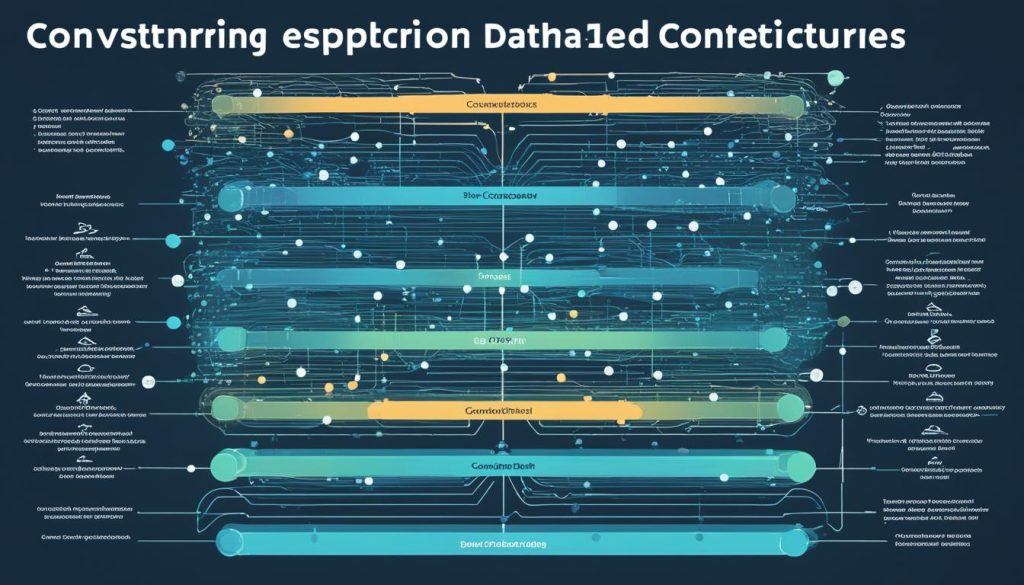Many programmers code by instinct without considering the choices they make in formatting, naming conventions, and coding practices. However, for those serious about their profession, following guidelines and best practices can improve code quality and maintainability. In the book “Perl Best Practices” by Damian Conway, 256 guidelines are provided to help programmers write better Perl code. These guidelines cover various aspects of coding, including layout, naming conventions, control structures, modularity, object orientation, testing, and debugging. The book offers practical suggestions based on real-world experience and is widely regarded by the Perl community.
Key Takeaways:
- Following best practices improves code quality and maintainability
- “Perl Best Practices” by Damian Conway provides practical suggestions for writing better Perl code
- Guidelines cover layout, naming conventions, control structures, modularity, object orientation, testing, and debugging
- The book offers practical suggestions based on real-world experience
- Widely regarded by the Perl community
The Importance of Best Practices in Perl Development
Following best practices in Perl development is crucial for ensuring effective communication and coordination among team members. As Perl is a versatile language with multiple approaches to task completion, a set of coherent and widely applicable guidelines is essential. By adhering to these best practices, developers can produce code that is clear, robust, efficient, maintainable, and concise.
While “Perl Best Practices” by Damian Conway serves as an invaluable resource providing practical suggestions, it is important to recognize that the book does not claim to be the definitive authority on Perl development practices. Instead, it offers insightful advice based on real-world experience, which can guide developers towards making informed decisions.
By embracing best practices in Perl development, developers can benefit from code that is easier to understand, modify, and maintain. These practices facilitate collaboration within development teams, ensuring code quality and efficiency throughout the development lifecycle. Additionally, adhering to established best practices contributes to the overall growth and professionalism of the Perl community.
Whether you are an experienced developer or just starting with Perl, incorporating best practices into your development workflow is an investment that pays off in terms of improved code quality, maintainability, and future scalability. Let’s explore some of the key areas where best practices can lead to code that stands the test of time and delivers exceptional results.
Guidelines for Code Layout and Naming Conventions
Proper code layout and consistent naming conventions play a vital role in enhancing code readability and maintainability. When writing Perl code, following guidelines for code layout and naming conventions is essential in order to create clean and organized code.
One of the valuable resources for understanding the recommended code layout practices is the book “Perl Best Practices” by Damian Conway. It provides detailed guidance on various aspects of code layout, including indenting, line length, whitespace usage, and other formatting considerations. By adhering to these guidelines, developers can ensure that their code is visually appealing and easy to understand.
Additionally, the book also covers naming conventions for variables, functions, and modules. Consistently following these conventions helps improve code consistency across different modules or projects, making it easier for other developers to navigate and work with the codebase. Furthermore, appropriate and descriptive names for variables, functions, and modules enhance code clarity and make it more self-explanatory.
The key to effective code layout and naming conventions is consistency. Consistent code layout ensures that the code is aesthetically appealing and easy to read, while consistent naming conventions improve code understandability and maintainability. By adopting a programming style that adheres to these guidelines, developers can enhance their productivity and facilitate collaboration with other team members.
To summarize, following the best practices for code layout and naming conventions, as outlined in “Perl Best Practices,” is crucial for creating clean and maintainable Perl code. It improves code readability, facilitates collaboration, and ensures that the codebase remains consistent and easy to navigate.
Choosing Data and Control Structures
When it comes to programming in Perl, having a solid understanding of data and control structures is essential for writing efficient and maintainable code. Perl offers a variety of options for structuring and managing data, as well as controlling program flow. In the book “Perl Best Practices” by Damian Conway, you’ll find valuable guidance on choosing the most suitable data and control structures for your specific programming needs.

Perl Syntax:
“Perl Best Practices” emphasizes the importance of leveraging the appropriate data structures to store and manipulate information effectively. The book explores the advantages of arrays, hashes, and scalars, providing real-world examples and best practices for implementing each one. Whether you need to store ordered data, create key-value pairs, or work with individual variables, “Perl Best Practices” offers valuable guidance on making the right choices.
In addition to data structures, the book also delves into control structures, such as loops and conditionals. By selecting the appropriate control structures, you can ensure efficient program execution and maintainability.
Choosing Data Structures
Data structures
- Arrays: These are useful for storing ordered lists of data elements. Arrays provide easy access to individual elements, making them ideal for tasks that involve iteration and indexing.
- Hashes: Hashes offer a way to store and retrieve data using key-value pairs. They are particularly handy when working with associative data or creating lookup tables.
- Scalars: Scalars are single values used to represent integers, floating-point numbers, strings, and other types of data. They are lightweight and efficient for storing individual data elements.
Control structures
- Loops: Loops enable you to repeat a specific block of code multiple times, making them essential for iterating over data structures or executing a set of instructions until a given condition is met.
- Conditionals: Conditionals allow you to control the flow of your program based on certain conditions. Using control structures like if-else statements and switches, you can make decisions and execute different blocks of code accordingly.
Comparison of Data and Control Structures
| Data Structures | Use Cases | Advantages |
|---|---|---|
| Arrays | Storing ordered data, iteration, indexing | – Fast access to individual elements – Easy to manipulate and sort |
| Hashes | Associative data, lookup tables, data retrieval | – Efficient key-value data storage – Fast data retrieval using keys |
| Scalars | Individual data elements | – Lightweight and efficient – Suitable for storing single values |
| Loops | Repeating code, iteration | – Efficient iteration over data structures – Ability to repeat specific tasks |
| Conditionals | Decision-making based on conditions | – Control flow based on conditions – Execute different code paths |
Effective Program Decomposition
Breaking down a program into smaller, modular components is a key aspect of maintainability and code reuse. By decomposing programs into subroutines, modules, and classes, developers can achieve easier understanding, testing, and modification of code. The book “Perl Best Practices” offers valuable suggestions on effective program decomposition in Perl programming.
Modular Programming
Modular programming is a software design technique that emphasizes the separation of functionality into distinct modules. Each module focuses on a specific task or aspect of the program, making the code more manageable and flexible. In Perl programming, modularization can be achieved through the use of subroutines, which are reusable blocks of code that perform specific operations.
By utilizing subroutines, developers can break down complex tasks into smaller, more manageable chunks. This not only improves the readability and organization of the code but also promotes code reuse and reduces redundancy. Additionally, modular programming allows for easier testing and maintenance, as changes made to a specific module will have minimal impact on other parts of the program.
Benefits of Program Decomposition
Effective program decomposition offers several benefits for Perl programmers:
- Maintainability: Modular code is easier to understand, modify, and debug. With clear separation of functionality, developers can focus on individual modules without having to comprehend the entire program.
- Code Reuse: Breaking down a program into reusable modules allows developers to leverage existing code in new projects. This promotes efficiency and consistency across multiple applications.
- Collaboration: Modular programming facilitates collaboration among team members. By dividing the program into modules, different developers can work on separate components simultaneously, reducing conflicts and promoting parallel development.
- Scalability: Modular code can be easily extended and scaled to accommodate evolving requirements. New features can be added by creating additional modules or extending existing ones, without affecting the entire program.
By following the guidelines provided by “Perl Best Practices,” developers can effectively decompose their programs into modular components, resulting in more manageable, flexible, and maintainable Perl applications.

Interface Design and Implementation
Designing and implementing well-defined interfaces is crucial for creating robust and reusable code. In the world of Perl programming, interface design plays a vital role in software development. By following best practices outlined in “Perl Best Practices,” developers can ensure their applications have reliable and intuitive interfaces that enhance the user experience.
Consistent Naming Conventions
Perl programming emphasizes the importance of consistent naming conventions in the design and implementation of interfaces. By adopting a standardized approach when naming variables, functions, and modules, developers can create more readable and maintainable code. Consistency in naming enhances the clarity of code and promotes effective communication among team members.
Proper Documentation
Thorough documentation is a critical aspect of interface design. “Perl Best Practices” suggests that developers include comprehensive descriptions, usage examples, and explanations of each interface component. Properly documenting interfaces not only helps other developers understand how to interact with the code but also enables efficient debugging and troubleshooting processes.
Encapsulation Techniques
Encapsulation is a fundamental concept in software development that emphasizes hiding internal implementation details and exposing only essential interface elements. “Perl Best Practices” emphasizes the use of encapsulation techniques such as creating abstract data types, employing private and public interfaces, and implementing access modifiers. These techniques promote code modularity, reduce dependencies, and enhance the overall maintainability of Perl applications.
“Good interface design is not just about aesthetics; it’s about creating interfaces that are intuitive, efficient, and reliable. With Perl programming, developers have the power to design interfaces that truly meet the needs of their users and ensure the success of their software.”
| Benefits of Well-Designed Interfaces | Best Practices in Interface Design |
|---|---|
| 1. Enhanced user experience | 1. Consistent naming conventions |
| 2. Improved usability and learnability | 2. Proper documentation |
| 3. Reduced development time and effort | 3. Encapsulation techniques |
| 4. Increased code maintainability | 4. Testing and validation of interfaces |
| 5. Facilitated code reuse | 5. Keeping interfaces simple and focused |
Error Handling and Testing Techniques
When it comes to Perl programming, proper error handling and testing are crucial for ensuring the reliability and quality of your code. In the book “Perl Best Practices,” you can find valuable guidelines and recommendations on handling errors and exceptions, writing effective unit tests, and employing efficient debugging techniques.
Error handling plays a vital role in preventing unforeseen issues from disrupting the functionality of your Perl applications. By implementing robust error handling mechanisms, you can catch and handle exceptions, ensuring that your code gracefully handles unexpected scenarios. “Perl Best Practices” provides insights into the best practices for error handling, helping you create more stable and fault-tolerant applications.
“Proper error handling is like having a safety net for your Perl code. It allows you to anticipate and address potential issues, minimizing the impact of errors on the overall performance of your application.”
In addition to error handling, thorough testing is essential to identify and address bugs and flaws in your Perl code. With the help of comprehensive unit tests, you can verify the correctness and effectiveness of your code, ensuring its reliability in different scenarios. “Perl Best Practices” offers valuable insights into writing effective unit tests, including techniques to cover multiple edge cases and assess code performance.
Debugging is another critical aspect of the development process. By employing efficient debugging techniques, you can identify and resolve issues quickly and effectively. The book provides recommendations on various debugging strategies, including leveraging Perl’s built-in debugging options and using debugging modules to streamline the debugging process.
By following the error handling and testing recommendations outlined in “Perl Best Practices,” developers can improve the overall quality of their Perl applications. Implementing proper error handling, writing effective unit tests, and employing efficient debugging techniques ultimately result in more stable, reliable, and robust code.

| Error Handling Techniques | Testing Techniques | Debugging Techniques |
|---|---|---|
| 1. Use appropriate exception handling mechanisms | 1. Write comprehensive unit tests | 1. Utilize Perl’s built-in debugging options |
| 2. Provide meaningful error messages | 2. Cover different test scenarios | 2. Utilize debugging modules |
| 3. Use log files or logging libraries | 3. Test for edge cases | 3. Analyze stack traces and error messages |
| 4. Handle errors gracefully | 4. Assess code performance | 4. Use breakpoints and step-through debugging |
Resources and Community for Perl Developers
As a Perl developer, it’s important to tap into the vast resources and supportive community available to enhance your skills and keep up with the latest developments. Whether you’re looking for insightful discussions, expert advice, or ready-made solutions, the Perl community has got you covered.
Online forums and mailing lists are bustling hubs of knowledge sharing and problem-solving. Platforms like PerlMonks, Perl Weekly, and Stack Overflow are teeming with active discussions, where experienced developers willingly lend a helping hand to beginners and seasoned programmers alike.
For more comprehensive resources, websites such as Perl.com and CPAN (Comprehensive Perl Archive Network) offer a wealth of information, tutorials, and documentation. CPAN, in particular, hosts an extensive collection of modules and libraries that can significantly speed up your development process and add functionality to your Perl projects.
“The Perl community is known for its generosity and willingness to share knowledge. The collective expertise, combined with the numerous online resources available, makes it easier than ever to find solutions and grow as a Perl developer.”
By actively participating in the Perl community, you can forge valuable connections, get feedback on your projects, and stay updated on the latest trends and techniques. Taking part in hackathons, workshops, and conferences such as The Perl Conference and YAPC (Yet Another Perl Conference) allows you to engage with like-minded individuals and expand your professional network.
Perl Development Resources
Here are some essential resources that every Perl developer should explore:
- Perl.com: A central hub for Perl-related news, articles, tutorials, and discussions.
- Perl Documentation: Official documentation that covers the syntax, modules, and functions of Perl.
- CPAN: The Comprehensive Perl Archive Network, home to thousands of Perl modules and libraries.
- PerlMonks: A community-driven question and answer forum for Perl developers.
- Stack Overflow: A popular platform for asking and answering programming-related questions, including Perl.
Remember, being an active member of the Perl community and utilizing the available resources can immensely contribute to your growth as a Perl developer. Embrace the collective knowledge and experiences shared by the community to excel in your Perl development endeavors.
Conclusion
By following best practices in Perl development, programmers can significantly improve the quality, maintainability, and efficiency of their code. “Perl Best Practices” by Damian Conway offers practical guidelines and recommendations based on real-world experience. While it may not claim to be the definitive set of best practices, the book provides valuable insights and advice for developers looking to enhance their Perl programming skills.
Adopting these best practices and actively participating in the Perl community can unlock the full potential of the language. Developers can leverage the power and flexibility of Perl to create clear, robust, and efficient applications. Whether it’s focusing on proper code layout and naming conventions, making informed choices regarding data and control structures, or effectively decomposing programs into modular components, following best practices can make a significant difference.
Furthermore, paying attention to interface design, error handling, and testing techniques can result in more reliable and maintainable Perl code. The Perl community provides a wealth of resources, including online forums, mailing lists, and libraries, to support developers in their journey. By tapping into the collective knowledge and expertise of the community, developers can continuously improve their Perl development skills and stay up to date with the latest advancements.

